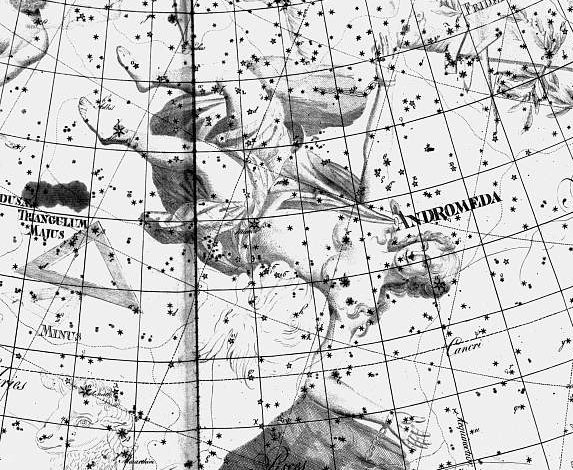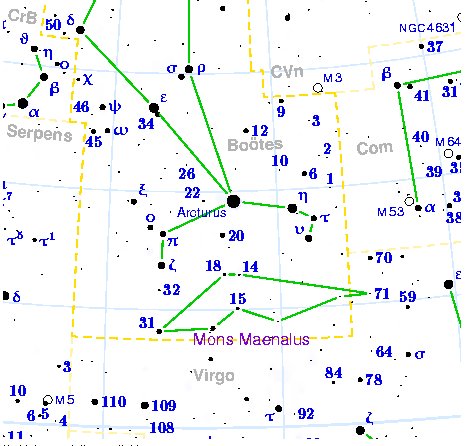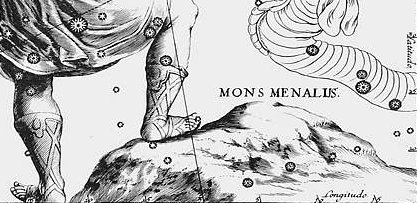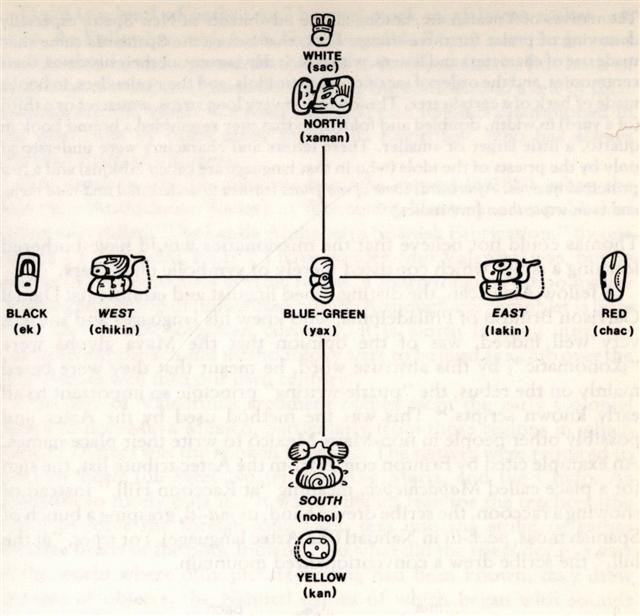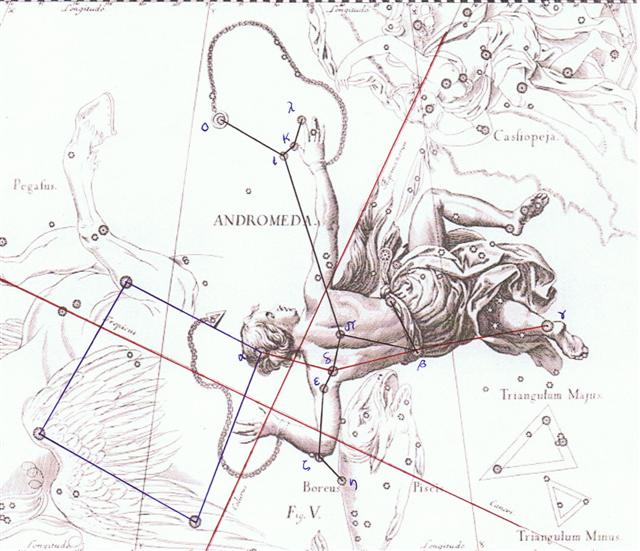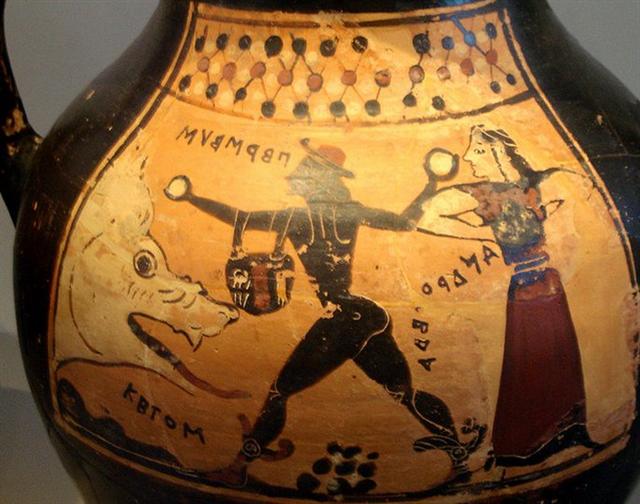127. Once again. In the G text glyph number 400 - 80 was at heliacal Adhil with Spica positioned 183 days later / earlier: ... Every year that is exactly divisible by four is a leap year, except for years that are exactly divisible by 100; [but] the centurial years that are exactly divisible by 400 are still leap years. For example, the year 1900 is not a leap year; the year 2000 is a leap year ...
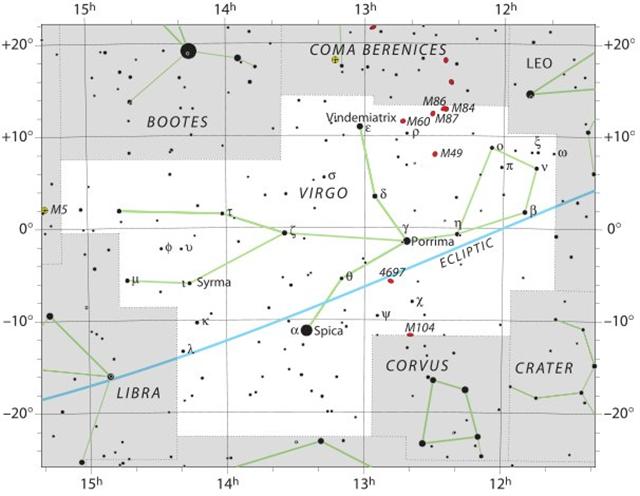 From Sirrah (α Andromedae, the Navel of the Horse), which was at 0h at the time of rongorongo, to the Train in the Garment of the Woman in Chains, Adhil (ξ Andromedae) there were 464 - 80 = 384 (= 8 * 48) nights (and Antares culminated at 21h in July 11 which was day 192 = 384 / 2). This cycle is longer than the solar year. In day 377 (= 13 * 29) Regulus culminated at 21h whereas Sadalmelik culminated at 21h when the Sun rose together with Spica in the ancient day 198 (= 18 * 11). ... The ordinary year in the previous Roman calendar consisted of 12 months, for a total of 355 days. In addition, a 27-day intercalary month, the Mensis Intercalaris, was sometimes inserted between February and March. This intercalary month was formed by inserting 22 days after the first 23 or 24 days of February; the last five days of February, which counted down toward the start of March, became the last five days of Intercalaris. The net effect was to add 22 or 23 days to the year, forming an intercalary year of 377 or 378 days ...
378 nights, 54 weeks, was the synodic cycle of
Saturn:
And 3 days after Spica came Heze:
At the time of Gregory XIII, we should remember, there were *27 - 4 = *23 precessional days down to the time of Julius Caesar and his calendar. Likewise were there *23 = *64 - *41 precessional days from the time frame of Bharani down to the time when Hyadum II had been at 0h. As to 71 Virginis this was probably a way to memorize the equation 26000 / 366. If there was a need to increase the precessional day count this should have been the proper place. It was located at the beginning of the primeval mound:
... Mons Maenalus, at the feet of Boötes, was formed by Hevelius, and published in his Firmamentum Sobiescianum; this title coinciding with those of neighboring stellar groups bearing Arcadian names. It is sometimes, although incorrectly, given as Mons Menelaus, - perhaps, as Smyth suggested, after the Alexandrian astronomer referred to by Ptolemy and Plutarch. The Germans know it as the Berg Menalus; and the Italians as Menalo. Landseer has a striking representation of the Husbandsman, as he styles Boötes, with sickle and staff, standing on this constellation figure. A possible explanation of its origin may be found in what Hewitt writes in his Essays on the Ruling Races of Prehistoric Times: The Sun-god thence climbed up the mother-mountain of the Kushika race as the constellation Hercules, who is depicted in the old traditional pictorial astronomy as climbing painfully up the hill to reach the constellation of the Tortoise, now called Lyra, and thus attain the polar star Vega, which was the polar star from 10000 to 8000 B.C. May not this modern companion constellation, Mons Maenalus, be from a recollection of this early Hindu conception of our Hercules transferred to the adjacent Bootes? The reversed hau tea at the beginning of line number 4 on side b was a powerful Sign: ... Atea then became the wife of Rua-tupua-nui, Source of Great Growth, and they became the parents of all the celestial beings, first the shooting stars, then the Moon and the Sun, next the comets, then the multitude of stars and constellations, and finally the bright and dark nebulae. When this tremendous task had been accomplished Atea took a third husband, Fa'a-hotu, Make Fruitful. Then occurred a curious event. Whether Atea had wearied of bringing forth offspring we are not told, but certain it is that Atea and her husband Fa'a-hotu exchanged sexes. Then the eyes of Atea glanced down at those of his wife Hotu and they begat Ru. It was this Ru who explored the whole earth and divided it into north, south, east, and west ...
In the C text there is a similarly
conspicious reversal at glyph number
151 (= 3 * 181 - 392) on side b,
viz. 240 days after MAY 16 (= 376 -
240):
When the Sun in March 14 (73) reached Manus Catenata, the Chained Hand of Andromeda, it meant the Full Moon was at Virgo in September 14 (*177 = 6 * 29½). The Sun had 2 wives, one high up in the north and another one down at the equator. Anciently the head of Virgo had arrived after the June solstice and the hand of Andromeda had been chained at the December solstice. At the time of rongorongo, however, Virgo and Andromeda had advanced in the solar year with 84 days (14 weeks) to day 257 (= 177 + 80) respectively to day 73 + 11 counted from the solstice. And Andromeda was no longer forced to stand still but was free from her chains and moving quickly a week before 0h. ... Antares, visible in the morning sky of December-January, came to stand for summer heat; hence the saying, 'Rehua cooks (ripens) all fruit'. The generally accepted version of the Rehua myth, according to Best, is that Rehua had two wives, the stars on either side of Antares. One was Ruhi-te-rangi or Pekehawani, the personification of summer languor (ruhi), the other Whaka-onge-kai, She-who-makes-food-scarce before the new crops can be harvested ...
There were 9 months from
Betelgeuze to Manus Catenata, 354 - 84 = 270
= 9 * 30:
And then there was another month to Achernar at the End of the River Eridanus (Eridu), to day 73 + 30 = 103 (April 13, 4-13). ... 3 days of cold food were followed by the renewal of fire in December 26 (360) or December 27 (361). April 13 (4-13 → 14 * 29½) was the unlucky day number 4 after April 9 (400) ...
|
||||||||||||||||||||||||||||||||||||||||||||||||||||||||||||||||||||||||||||||||||||||||||||||||||||||||||||||||||||||||||||||||||||||||||||||||||||||||||||||||||||||||||||||||||||||||||||||||||||||||||||||||||||||||||||||||||||||||||||||||||||||||||||||||||||||||||||||||||||||||||||||||||||||||
